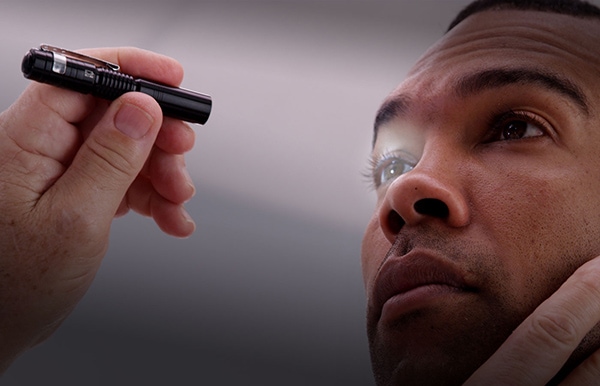Utilizing Pupillary Evaluation as a Neurological Tool

Pupillary evaluation is a crucial aspect of neurological assessments, as the size and reactivity of the pupils can provide valuable information about the functioning of the brain and the central nervous system. Accurate measurement of these characteristics is essential to assessing and diagnosing neurological conditions correctly.
This blog post will delve deeper into pupillary evaluation as a neurological tool, exploring its importance and the various techniques and methods used in this assessment. We will also discuss the purpose of pupillary evaluation and how it can help healthcare professionals make informed decisions about patient care.
By understanding the significance of pupillary evaluation in neurological assessments, we can better appreciate its role in diagnosing and treating various conditions.
How pupillary evaluation is used as a neurological tool?
Role of the Pupil in the Brain’s Response to Light
The pupil is the small, circular opening in the center of the iris. It controlsregulates the amount of light that enters the eye by contracting or dilating in response to the amount of light present. This process of pupil reactivity is known as the pupillary light reflex.
Pupillary Light Reflex and Its Relationship to Brain Function
A part of the brain controls the pupillary light reflex, called the optic nerve, which transmits information about light and vision to the brain. When the pupil constricts in response to bright light, the optic nerve and brain function properly. Conversely, if the pupil cannot constrict or constricts unevenly, it may be a sign of a neurological issue.
Pupillary Size and Reactivity as Indicators of Neurological Conditions
Pupillary evaluation, pupil size, and reactivity measurement are among the best neurological tools. Inequalities in pupil size and reactivity can indicate various neurological conditions, such as brain injury, inflammation, and abnormal brain activity. By having a doctor measure pupil size and reactivity, healthcare professionals can gain insight into the health of the optic nerve and brain, helping to diagnose and treat neurological conditions.
The importance of accurate measurement in pupillary evaluation
The Potential Consequences of Inaccurate Measurement
Accurate measurement is crucial in pupillary evaluation for several reasons. Inaccurate measurement can lead to misdiagnosis or improper treatment. For example, if a healthcare provider misinterprets the size or reactivity of a patient’s pupils, they may diagnose a condition that doesn’t exist or cannot identify a serious issue. This can have severe consequences for the patient’s health and well-being.
The Need for Standardized Measurement Techniques
To avoid these kinds of errors, it’s essential to use standardized measurement techniques. This ensures that all healthcare providers use the same methods and criteria to evaluate pupil size and reactivity. One commonly used method is the NPi, or “Neurological Pupil Index,” which measures how far a patient can bring their eyes together when focusing on a single object.
Other Factors to Consider
Besides using standardized techniques, it’s essential to consider other factors affecting pupil size and reactivity. For example, certain medications and lighting conditions can alter the appearance of the pupils. By taking these factors into account, healthcare providers can more accurately interpret the results of a neuro exam.
Challenges and considerations in the pupillary evaluation
Variability in Measurement
One challenge in pupillary evaluation is the potential for variability in measurement because of factors such as age and ethnicity. For example, the size of a person’s pupils may naturally vary based on age, with younger individuals having larger pupils. Certain races may have consistently larger or smaller pupils on average compared to others. Trained professionals must consider these factors when interpreting pupillary size and reactivity measurements.
The Need for Trained Professionals
Accurately assessing and interpreting pupil size and reactivity requires a trained professional. This is because the size and reactivity of the pupils can be affected by a wide range of neurological and non-neurological factors, and an experienced professional is best equipped to consider these factors when interpreting the results of a pupillary evaluation.
The Role of Technology
Technology, such as pupillometers, can improve the accuracy and efficiency of pupillary evaluation. Pupillometers automatically measure pupil size and reactivity, providing a more objective and reliable measurement than manual evaluation. However, it is still essential for trained professionals to interpret the results of pupillometry measurements in the comprehensive neuro exam and other NPi (neurological pupillary index) findings.
